#inhospitable region
Text
The One Place I’d Never Want to Visit: A Journey Into the Unknown
Adopt the pace of nature: her secret is patience.— Ralph Waldo Emerson
What place in the world do you never want to visit? Why?
Traveling the world is an exciting adventure that many of us dream of. Exploring new cultures, tasting exotic cuisines, and witnessing breathtaking landscapes are just a few of the reasons why people love to travel. But is there a place in the world that you never want…
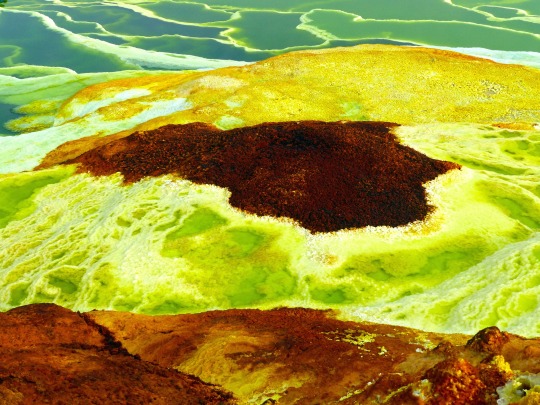
View On WordPress
#active volcanoes#adventure limits#barren wasteland#dailyprompt#dailyprompt-1910#Danakil Depression#dangerous destination#Erta Ale#Ethiopia#extreme heat#geothermal activity#harsh conditions#human endurance#inhospitable environment#inhospitable region#lava lake#natural wonders#never want to visit#otherworldly place#political instability#remote destination#salt flats#survival challenges#toxic fumes#travel risks#untouched landscapes#world’s hottest place
0 notes
Video
youtube
#TRIUMPHANTTHURSDAY-UNSUNGHERO- Rohit-Part-4
#youtube#TRIUMPHANTTHURSDAY-UNSUNGHERO- Rohit-Another passion is that he travels to INHOSPITABLE HILLY Regions and teaches children there . How PAREN
0 notes
Text
Wizard News
The Boiling Hills have quit boiling. The region is known for its inhospitable swirling red sand and geysers. The sand is just as red as ever, but is swirling less than before with the geysers mysteriously on hiatus.
We interviewed an ecologist to find out why this might be:
"I have no idea. Geysers are a geological phenomenon. Who are you? How did you get in my house?"
280 notes
·
View notes
Text
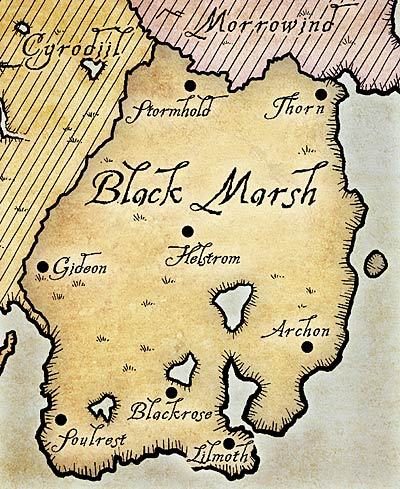
"So you wish to venture into Black Marsh, yes? A foolish endeavor for all but the scale-covered Argonians. The land is cruel and inhospitable compared to even the harshest regions of Tamriel."
--The Official Survival Guide to Tamriel (which releases in just a few days), desperately trying to convince you not to go to Black Marsh.
152 notes
·
View notes
Text
...I just found a guide on how a Bhaalspawn can become God of Murder in an old Dragon article!
Disclaimer: You might need to kill Bhaal again first for this to work.
"First, [the Bhaalspawn] must bring about the death of a thousand innocents. It can do this through a variety of methods: unleashing a magical plague, using magic to destroy a city with an earthquake, awakening and then controlling an ancient dragon... the possibilities are endless.
"Next, it must recover a piece of its father's mortal flesh; either from the body that lies within the Winding Water where Bhaal was killed during the Time of Troubles or else the body left in the Moonshae isles, where Bhaal's avatar was killed by King Tristran of the ffolk.
"Finally, he must sit upon the Throne of the Gods and be judged by the overgod Ao. The Throne could be located in any number of inhospitable places: the Starpeaks in the High Forest, in the deepest regions of the Underdark, or somewhere on the Outer Planes." - Dragon #288
-
Other fun stuff in there included the idea that Bhaal was very likely to direct his kids to fuck up Cyric's plans.
There was also a guide to the weird powers they will develop:

-
Warning, having Bhaal as a father may cause you to exhibit two or more of the following side effects:
Addiction to homicide
(Refusal to commit homicide will lead to your mind being eaten away until you turn into a ravening, feral animal.)
Your soul going to hell (well, Gehenna) when you're unconscious
Viscous black blood that attracts devils and demons like flies to honey
Poisonous blood! You can coat your weapons with it!
Turning into a divine murder monster
Getting so carried away with bloodlust you try to fight everything. Literally everything in reach, all at once.
Overwhelming homicidal rage when slightly inconvenienced
A steadily weakening sense of free will
Everybody around you immediately dislikes you because you give off Vibes.
A personality so bad it has charisma penalties
Nightmares so traumatic they actually impair your ability to function while awake
Detect evil spells will say you're evil and holy weapons and water will harm you. Even if you're not evil
Being fireproof, for some reason
Super strength
And more!
#...I'm stealing some of these for my Charname tbh#Also hey! Durge already has Bhaal's flesh.#It's their *own* body!#I wasn't even looking for this I was just browsing an index for FR articles in Dragon magazines and found it#...why the fire resistance?#...and why are we alternating between “it” and “he” as pronouns in an article written by cis men in the 2000s? Weird.#durge#the dark urge#dark urge#lore stuff
352 notes
·
View notes
Text
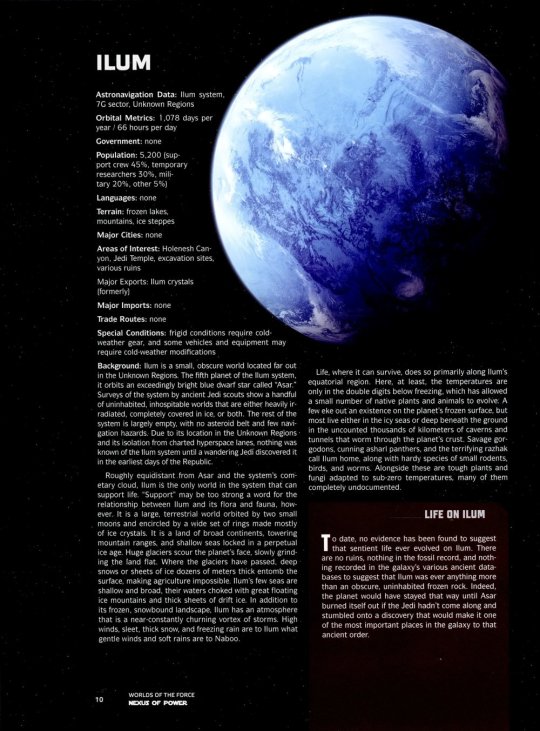
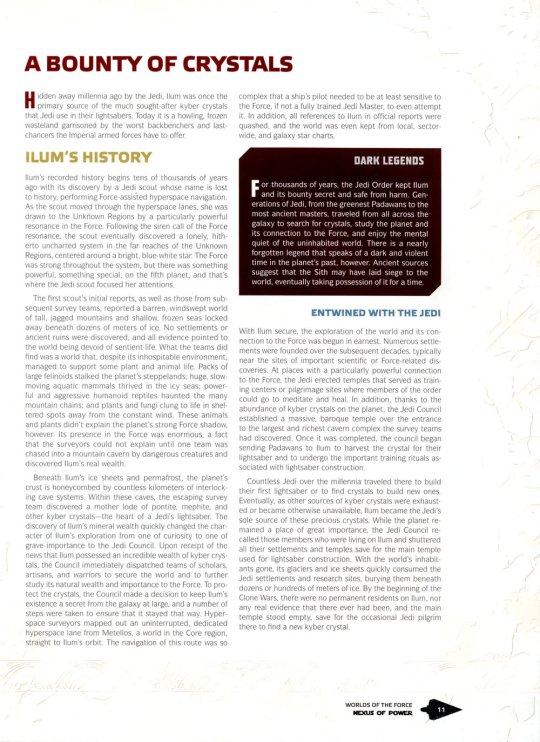
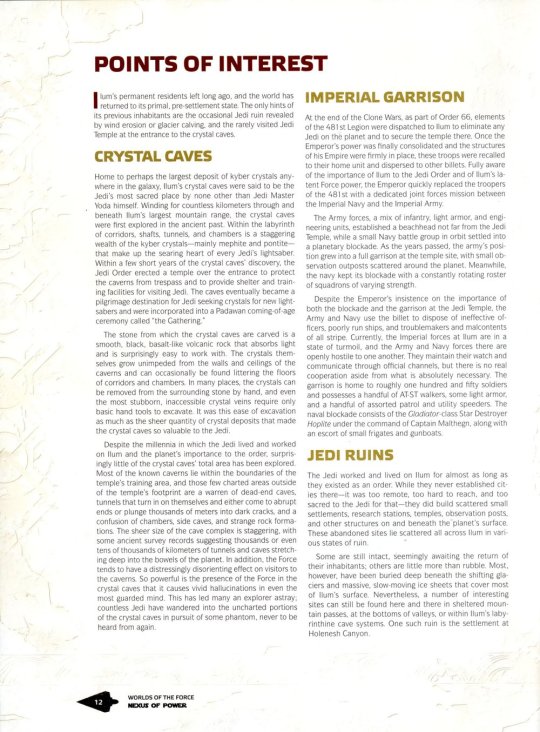



PLANET: ILUM
Astronavigation Data: Ilum system, 7G sector, Unkonwn Regions
Orbital Metrics: 1,078 days per year/66 hours per day
Goverment: None
Population: 5,200 (support crew 45%, temporary researchers 30%, military 20%, other 5%)
Languages: None
Terrain: Frozen lakes, mountains, ice steppes
Major Cities: None
Areas of Interest: Holenesh Canyon, Jedi Temple, excavation sites, various ruins
Major Exports: Ilum crystals
[Source: Star Wars - Force and Destiny - Nexus of Power - Force Worlds]
BACKGROUND:
Ilum is a small, obscure world located far out in the Unknown Regions. The fifth planet of the Ilum system, it orbits an exceedingly bright blue dwarf star called “Asar.” Surveys of the system by ancient Jedi scouts show a handful of uninhabited, inhospitable worlds that are either heavily irradiated, completely covered in ice, or both. The rest of the system is largely empty, with no asteroid belt and few navigation hazards. Due to its location in the Unknown Regions and its isolation from charted hyperspace lanes, nothing was known of the Ilum system until a wandering Jedi discovered it in the earliest days of the Republic.
Roughly equidistant from Asar and the system’s cometary cloud, Ilum is the only world in the system that can support life. “Support” may be too strong a word for the relationship between Ilum and its flora and fauna, however. It is a large, terrestrial world orbited by two small moons and encircled by a wide set of rings made mostly of ice crystals. It is a land of broad continents, towering mountain ranges, and shallow seas locked in a perpetual ice age. Huge glaciers scour the planet’s face, slowly grinding the land flat. Where the glaciers have passed, deep snows or sheets of ice dozens of meters thick entomb the surface, making agriculture impossible. Ilum's few seas are shallow and broad, their waters choked with great floating ice mountains and thick sheets of drift ice. In addition to its frozen, snowbound landscape, Ilum has an atmosphere that is a near-constantly churning vortex of storms. High winds, sleet, thick snow, and freezing rain are to Ilum what gentle winds and soft rains are to Naboo.
Life, where it can survive, does so primarily along Ilum's equatorial region. Here, at least, the temperatures are only in the double digits below freezing, which has allowed a small number of native plants and animals to evolve. A few eke out an existence on the planet’s frozen surface, but most live either in the icy seas or deep beneath the ground in the uncounted thousands of kilometers of caverns and tunnels that worm through the planet’s crust. Savage gorgodons, cunning asharl panthers, and the terrifying razhak call Ilum home, along with hardy species of small rodents, birds, and worms. Alongside these are tough plants and fungi adapted to sub-zero temperatures, many of them completely undocumented.
LIFE ON ILUM:
To date, no evidence has been found to suggest that sentient life ever evolved on Ilum. There are no ruins, nothing in the fossil record, and nothing recorded in the galaxy’s various ancient databases to suggest that Ilum was ever anything more than an obscure, uninhabited frozen rock. Indeed, the planet would have stayed that way until Asar burned itself out if the Jedi hadn’t come along and stumbled onto a discovery that would make it one of the most important places in the galaxy to that ancient order.
ILUM'S HISTORY:
Ilum's recorded history begins tens of thousands of years ago with its discovery by a Jedi scout whose name is lost to history, performing Force-assisted hyperspace navigation. As the scout moved through the hyperspace lanes, she was drawn to the Unknown Regions by a particularly powerful resonance in the Force. Following the siren call of the Force resonance, the scout eventually discovered a lonely, hitherto uncharted system in the far reaches of the Unknown Regions, centered around a bright, blue-white star. The Force was strong throughout the system, but there was something powerful, something special, on the fifth planet, and that's where the Jedi scout focused her attentions.
The first scout's initial reports, as well as those from sub sequent survey teams, reported a barren, windswept world of tall, jagged mountains and shallow, frozen seas locked away beneath dozens of meters of ice. No settlements or ancient ruins were discovered, and all evidence pointed to the world being devoid of sentient life. What the teams did find was a world that, despite its inhospitable environment, managed to support some plant and animal life. Packs of large felinoids stalked the planet's steppelands; huge, slow moving aquatic mammals thrived in the icy seas; powerful and aggressive humanoid reptiles haunted the many mountain chains; and plants and fungi clung to life in sheltered spots away from the constant wind. These animals and plants didn't explain the planet's strong Force shadow, however. Its presence in the Force was enormous, a fact that the surveyors could not explain until one team was chased into a mountain cavern by dangerous creatures and discovered Ilum's real wealth.
Beneath Ilum's ice sheets and permafrost, the planet's crust is honeycombed by countless kilometers of interlocking cave systems. Within these caves, the escaping survey team discovered a motherlode of pontite, mephite, and other kyber crystals—the heart of a Jedi's lightsaber. The discovery of Ilum's mineral wealth quickly changed the char acter of Ilum's exploration from one of curiosity to one of grave importance to the Jedi Council. Upon receipt of the news that Ilum possessed an incredible wealth of kyber crystals, the Council immediately dispatched teams of scholars, artisans, and warriors to secure the world and to further study its natural wealth and importance to the Force. To pro tect the crystals, the Council made a decision to keep Ilum's existence a secret from the galaxy at large, and a number of steps were taken to ensure that it stayed that way. Hyperspace surveyors mapped out an uninterrupted, dedicated hyperspace lane from Metellos, a world in the Core region, straight to Ilum's orbit. The navigation of this route was so complex that a ship’s pilot needed to be at least sensitive to the Force, if not a fully trained Jedi Master, to even attempt it. In addition, all references to Ilum in official reports were quashed, and the world was even kept from local, sector wide, and galaxy star charts.
DARK LEGENDS:
For thousands of years, the Jedi Order kept Ilum and its bounty secret and safe from harm. Generations of Jedi, from the greenest Padawans to the most ancient masters, traveled from all across the galaxy to search for crystals, study the planet and its connection to the Force, and enjoy the mental quiet of the uninhabited world. There is a nearly forgotten legend that speaks of a dark and violent time in the planet’s past, however. Ancient sources suggest that the Sith may have laid siege to the world, eventually taking possession of it for a time.
ENTWINED WITH THE JEDI:
With Ilum secure, the exploration of the world and its connection to the Force was begun in earnest. Numerous settle ments were founded over the subsequent decades, typically near the sites of important scientific or Force-related discoveries. At places with a particularly powerful connection to the Force, the Jedi erected temples that served as training centers or pilgrimage sites where members of the order could go to meditate and heal. In addition, thanks to the abundance of kyber crystals on the planet, the Jedi Council established a massive, baroque temple over the entrance to the largest and richest cavern complex the survey teams had discovered. Once it was completed, the council began sending Padawans to Ilum to harvest the crystal for their lightsaber and to undergo the important training rituals associated with lightsaber construction.
Countless Jedi over the millennia traveled there to build their first lightsaber or to find crystals to build new ones. Eventually, as other sources of kyber crystals were exhaust ed or became otherwise unavailable, Ilum became the Jedi’s sole source of these precious crystals. While the planet remained a place of great importance, the Jedi Council recalled those members who were living on Ilum and shuttered all their settlements and temples save for the main temple used for lightsaber construction. With the world’s inhabitants gone, its glaciers and ice sheets quickly consumed the Jedi settlements and research sites, burying them beneath dozens or hundreds of meters of ice. By the beginning of the Clone Wars, there were no permanent residents on Ilum, nor any real evidence that there ever had been, and the main temple stood empty, save for the occasional Jedi pilgrim there to find a new kyber crystal.
CRYSTAL CAVES:
Home to perhaps the largest deposit of kyber crystals any where in the galaxy, Ilum’s crystal caves were said to be the Jedi’s most sacred place by none other than Jedi Master Yoda himself. Winding for countless kilometers through and beneath Ilum’s largest mountain range, the crystal caves were first explored in the ancient past. Within the labyrinth of corridors, shafts, tunnels, and chambers is a staggering wealth of the kyber crystals—mainly mephite and pontite— that make up the searing heart of every Jedi’s lightsaber. Within a few short years of the crystal caves’ discovery, the Jedi Order erected a temple over the entrance to protect the caverns from trespass and to provide shelter and training facilities for visiting Jedi. The caves eventually became a pilgrimage destination for Jedi seeking crystals for new lightsabers and were incorporated into a Padawan coming-of-age ceremony called “the Gathering.”
The stone from which the crystal caves are carved is a smooth, black, basalt-like volcanic rock that absorbs light and is surprisingly easy to work with. The crystals themselves grow unimpeded from the walls and ceilings of the caverns and can occasionally be found littering the floors of corridors and chambers. In many places, the crystals can be removed from the surrounding stone by hand, and even the most stubborn, inaccessible crystal veins require only basic hand tools to excavate. It was this ease of excavation as much as the sheer quantity of crystal deposits that made the crystal caves so valuable to the Jedi.
Despite the millennia in which the Jedi lived and worked on Ilum and the planet’s importance to the order, surprisingly little of the crystal caves’ total area has been explored. Most of the known caverns lie within the boundaries of the temple’s training area, and those few charted areas outside of the temple’s footprint are a warren of dead-end caves, tunnels that turn in on themselves and either come to abrupt ends or plunge thousands of meters into dark cracks, and a confusion of chambers, side caves, and strange rock formations. The sheer size of the cave complex is staggering, with some ancient survey records suggesting thousands or even tens of thousands of kilometers of tunnels and caves stretching deep into the bowels of the planet. In addition, the Force tends to have a distressingly disorienting effect on visitors to the caverns. So powerful is the presence of the Force in the crystal caves that it causes vivid hallucinations in even the most guarded mind. This has led many an explorer astray; countless Jedi have wandered into the uncharted portions of the crystal caves in pursuit of some phantom, never to be heard from again.
JEDI RUINS:
The Jedi worked and lived on Ilum for almost as long as they existed as an order. While they never established cities there—it was too remote, too hard to reach, and too sacred to the Jedi for that—they did build scattered small settlements, research stations, temples, observation posts, and other structures on and beneath the planet’s surface. These abandoned sites lie scattered all across Ilum in various states of ruin.
Some are still intact, seemingly awaiting the return of their inhabitants; others are little more than rubble. Most, however, have been buried deep beneath the shifting glaciers and massive, slow-moving ice sheets that cover most of Ilum’s surface. Nevertheless, a number of interesting sites can still be found here and there in sheltered mountain passes, at the bottoms of valleys, or within Ilum’s labyrinthine cave systems. One such ruin is the settlement at Holenesh Canyon.
HOLENESH CANYON:
Located some five hundred kilometers from the main Jedi Temple at the mouth of the crystal caves, Holenesh Canyon is a deep, sheer-sided cleft in the planet’s surface over a kilometer deep that runs for roughly ten kilometers through one of Ilum's vast mountain ranges. The settlement, once home to around one hundred sentients, was built near the canyon’s end in the shadow of the mountain range’s highest peaks. It was established millennia ago to study a strange fluctuation in the Force that seemed to occur only once every few hundred years. Named for the Jedi who first recorded the anomaly, this small, isolated outpost stood for centuries before being destroyed in an avalanche triggered by a massive groundquake coinciding with the reappearance of the Force anomaly. Many of the settlement’s inhabitants were killed as they slept, but some managed to escape with little more than the clothes on their backs or what they could grab in their flight. Further seismic disturbances, combined with freak storms, prevented the mounting of a proper rescue mission, and by the time the Jedi were able to return to the canyon, the settlement was completely covered in snow and countless tons of fallen stone.
In the millennia since the destruction of the settlement, parts of it have been exposed through erosion and seismic activity. While the buildings are barely recognizable as such, their contents were surprisingly well preserved. Thanks to the remoteness of the ruined settlement and the difficulty of reaching it, precious little has been removed from the site. Anyone possessing the skills and courage to excavate the site might unearth any number of ancient Jedi relics.
CREATURES AND CHALLENGES:
Ilum's climate is exceptionally harsh. Its land and most of its surface water are locked away beneath glaciers and permanent sheets of ice. Temperatures, even in what are usually considered temperate or tropical zones on other worlds, can sink to dozens of degrees below freezing. These temperatures are typically accompanied by howling gales and blizzards full of driving snow and ice shards. Few creatures, and even fewer plants, live on Ilum. To survive in these brutal conditions, Ilum's creatures and plants are both extremely hardy and extremely dangerous.
ASHARL PANTHER [RIVAL]:
Asharl panthers are one of the more common predators on Ilum. They are large, aggressive, territorial felines that make their homes in Ilum's high northern and southern latitudes. Adult asharl panthers average between two and three meters long and stand roughly one meter high at the shoulder. Their four powerful legs end in two-toed feet equipped with nonretractable claws. The creatures’ bodies are covered in dense, smooth fur in shades of white, gray, and blue that holds their body heat in to protect them from the cold and driving wind. They have broad, earless heads with pronounced brow ridges, and their faces are remark ably expressive, with short, blunt snouts and golden eyes. The most noticeable feature is a pair of long, tentacle-like sensory organs that grow from their shoulders. Asharl panthers live in small family groups and typically hunt in pairs or in groups of four.
BLISMAL [MINION]:
Blismal are small, furry, inoffensive rodents who live in the tunnels and caverns deep beneath Ilum's surface. About the size of a grown human’s hand, blismal have four legs; sharp featured faces with small black eyes, round ears, and long snouts; and short, hairless tails. Their bodies are covered in thick, luxurious, silvery fur that keeps them warm and sheds water and dirt. They feed mostly on cave fungus and insects, and they are happy to be left alone in the dark to live out their lives.
Like the harmless snowfeathers, which live on the surface, blismal have few natural predators. This is largely due to their speed and cautious natures, although they do have a frighteningly effective defense mechanism. When frightened, blismal make a shrill, painful, and sustained shrieking noise to ward off attackers and call for assistance from other blismal. When three or more blismal join in, they create a howl loud enough to shatter crystals and cause cave-ins, an ability that Jedi experienced firsthand long ago. The Jedi attributed this ability to the blismal’s close connection to the Force, and were able to counter the effects of the shrieking by manipulating the Force around the creatures. In doing so, Jedi exploring Ilum's cavern system were able to capture blismal, which turned out to be relatively easy to domesticate.
GORGODON [RIVAL]:
Gorgodons are, perhaps, the most famous creatures to live on frozen Ilum. They are massive, non-sentient, thick-skinned reptilian creatures with long, powerful arms, short legs, and an axe-shaped head. A thick, shaggy coat of dark gray fur covers them from their shoulders to their feet, leaving only their head, which is a sickly orange color, bare to the elements. Gorgodons are incredibly strong and can with stand almost any punishment. It is said that they can even shrug off blaster bolts. They are a dangerous combination of dumb, aggressive, and brutal, and are one of the few animals that attack for no good reason. When the Jedi first arrived on Ilum, the gorgodons were the creatures that gave them the most trouble. Throughout the Jedi Order, the name of this creature was used in threats and curses, such as “thick as a gorgodon” or “as angry as a gorgodon’s mother.”
RAZHAK [NEMESIS]:
Among the most fearsome predators on Ilum, these massive creatures are as agile as they are deadly. Averaging around eight meters in length, razhak-are armored, segmented, wormlike creatures that propel themselves using rippling muscle ridges. Their bodies are broad and flat, covered with thick, chitinous plates in shades of white and blue. While they have no apparent eyes, their heads are topped with long, segmented antennae that serve as sensory organs. Their huge mouths feature multiple rows of serrated teeth.
Aggressive and solitary, razhak live in the endless tunnel systems beneath Ilum's surface. They are deceptively fast and, when they attack, they rear up like a serpent and at tempt to swallow prey whole. Anything they can’t eat in one bite they tear into pieces by grasping it in their mouth and shaking it violently. In addition to possessing great speed and a savage demeanor, razhak also can generate intense heat strong enough to rapidly melt solid ice and cause serious burns to exposed flesh. This ability allows them to tunnel through ice as though it were soft sand. Razhak usually build their nests inside of ice walls or densely packed snow, typically leaving the nest only to eat or mate.
Thankfully, while they are terrifying to behold and extremely dangerous, razhak are also easily distracted and creatures of minimal intelligence. Keeping this in mind, a clever opponent can easily outflank them, lead them into traps, or make them lose interest in attacking altogether.
SNOWFEATHER [MINION]:
Snowfeathers are small, clever, flightless birds native to Ilum. Their bodies are covered in a dense layer of oily, white feathers that protects them from Ilum's bone-chilling cold and vicious weather. Relatively harmless creatures, they live in nesting colonies built into ice shelves or cliff faces.
Despite their inoffensive nature and inability to fly, snowfeathers have few natural predators, for two reasons. First, their meat tastes terrible and is mildly poisonous, causing painful cramps, bloating, and loosening of the bowels in those unfortunate enough to eat them. Second, they have a connection to the Force that gives them the ability to project an illusion that makes them seem larger and more formidable than they really are. These characteristics have allowed them to survive and even thrive on an inhospitable planet full of savage creatures like gorgodons and asharl panthers.
112 notes
·
View notes
Text
Howdy's Holiday Hullabaloo...Latter's lyrics explained + there are cities beyond the neighborhood? [Analysis/Theory]
LATTER (BROTHER): But of course, Howdy!! Oh, jubilance, oh, mirth! What a blissfully blithesome day! As it always is when I get to spend time with you, my beloved brother!
HOWDY: (comparatively unenthusiastic) Uh-huh, mm, same to you, Latter.
^So first of all, Howdy has a huge family that lives elsewhere- a city from what it seems like. And by what we hear, Howdy and his brother Latter do not get along in particular.
LATTER (BROTHER): Inhospitable! Supercilious! And, unbearably contentious! This blizzarding apocalypse-oh hold on... acropolis, providing a holiday hypothesis--Where doth thine yonder window break? Probably by a hippopotamus…
^I'll be breaking these lyrics down:
First, he uses these argumentative words to describe the possible blizzard they're in (because it's winter for them, on the welcome home site the restoration team says they made a mistake and meant for this update to be in December as opposed to March)
Next, he mentions "acropolis" which translates to "high city" in Greek. So from this revelation, we now know there are cities and other neighborhoods beyond THIS neighborhood we currently know and love.
Then, "Providing a holiday hypothesis"; he's describing the holiday homewarming that is currently being celebrated.
And, "Where doth thine yonder window break?"; this line is a playful and poetic twist on Shakespeare's famous line from Romeo and Juliet: "But soft, what light through yonder window breaks?" It's a reimagining of the original, and suggesting that the window is breaking instead of letting in light.
Lastly, "Probably by a hippopotamus…"; that was a random line, a non sequitor if you will but it seems that Latter is subtly trying to say not only does he barely like his brother Howdy, but he also thinks his shop is a joke. No pun intended.
HOWDY: (SUNG)
Truth be told, his writin’ fill me with a certain dread… (Howdy also disliking Latter's occupation)
Now, Latter here’s a poet,
Or at least that’s what he says! (Howdy mocking Latter)
But even ramblin’ on and on (Howdy is fed up with Latter's voice)
He’s family, through and through! So I’ll bear with it, just today, for…The Ho-li-day Hull-a-ba-loo! (He's still keeping into consideration that Latter is family and turns the other cheek)
GAM-GAM SALLY TATIONS (GRANDMA): I told you all that big city fast-talkin’ isn’t good for ya!
So...we have another mention of there being a city, of which Howdy's family may have? originated from. This means we now know Howdy came from another region and moved to the neighborhood.
Excellent! So in addition to Sally falling from the heavens, Julie formerly living in a cave with her siblings, and Eddie not remembering where he came from, we now know Howdy used to live in the city.
That just opens up more speculation on these characters backgrounds.
#welcome home#fyp#barnaby b beagle#eddie dear#home#frank frankly#howdy pillar#julie joyful#sally starlet#wally darling#poppy patridge#welcome home howdy#wh howdy#howdy analysis#howdy theory#theory#analysis#welcome home arg
113 notes
·
View notes
Text
WHAT IS BEYOND THE EDGE OF THE SOLAR SYSTEM??
Blog#383
Wednesday, March 13th, 2024.
Welcome back,
Earth is the sixth planet from the edge of the solar system, meaning we're none too near this cold and inhospitable frontier. But we've sent out various spacecraft over the years, so do we have any idea what the edge of the solar system looks like?
The answer is yes, but it's a work in progress. One of the latest developments, a 3D map of the solar system's edge that took 13 years to create, revealed a few more secrets about this mysterious boundary, called the outer heliosphere.
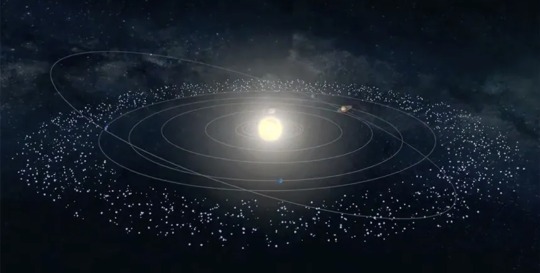
The outer heliosphere marks the region of space where the solar wind, or the stream of charged particles emitted from the sun, is "deflected and draped back" by the interstellar radiation that permeates the empty space beyond the solar system, said Dan Reisenfeld, a space science researcher at Los Alamos National Laboratory in New Mexico and head of the team that conducted the research on the 3D map. In other words, solar wind and interstellar particles meet and form a boundary at the far reaches of the solar system.

Earthlings first got a glimpse of the solar system's outer edge in 2012, when Voyager I, a NASA spacecraft that launched in 1977, crossed into interstellar space, according to NASA. Voyager 2 was not far behind, repeating the feat in 2018. Equipped with golden records full of Bach, Louis Armstrong and humpback whale songs, in addition to their scientific instruments, Voyagers 1 and 2 reported a sudden dropoff in solar particles and a substantial increase in galactic radiation when they left the solar system, according to NASA's Jet Propulsion Laboratory at the California Institute of Technology.
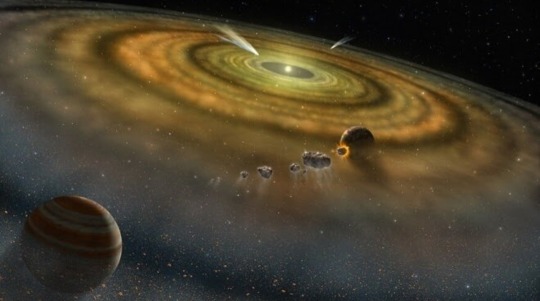
The new 3D map reveals even more about the heliosphere. The inner layer — where the sun and its planets are nestled — is roughly spherical and is thought to extend roughly 90 astronomical units (AU) in all directions. (One AU is the average distance between Earth and the sun, about 93 million miles, or 150 million kilometers.) The outer layer is much less symmetrical. In one direction — that in which the ever-moving sun plows through the space in front of it, encountering cosmic radiation — the outer heliosphere extends about 110 AU, but in the opposite direction, it's much longer, at least 350 AU, according to Reisenfeld.
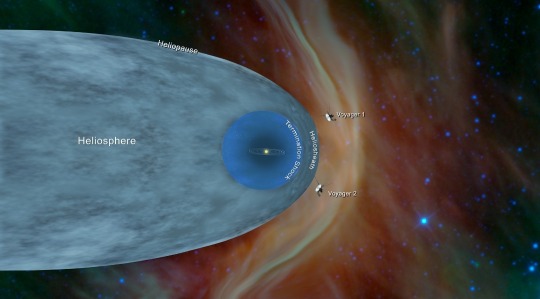
That lack of symmetry comes from the sun's movement through the Milky Way, as it experiences friction with the galactic radiation in front of it and clears out a space in its wake. "There's a lot of plasma [charged particles] in the interstellar medium, and… the inner heliosphere, which is pretty round, is an obstacle in this stream of plasma which is flowing past it," Reisenfeld told Live Science. "It has the same effect as water going around a rock in a stream," with a rush of water crashing into the rock in front and a sheltered calm behind it.
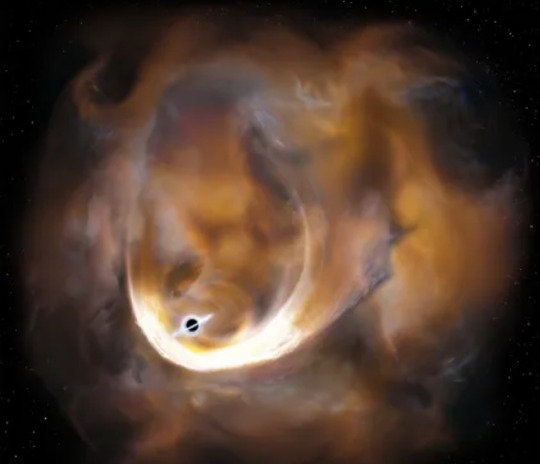
Measurements for the 3D map were gathered using the Interstellar Boundary Explorer (IBEX), which was launched in 2008 and is "the size of a bus tire," according to NASA. It's pronounced "like the animal," Reisenfeld said, referring to the ibex mountain goats known for their gravity-defying treks up alpine cliffs. But the animal that IBEX really takes after is the bat.

Many bats hunt insects, such as mosquitoes, by emitting a pulse of sound and using the time delay of the echo to figure out the distance to their prey. Likewise, IBEX detects solar-wind particles that have bounced back from the edges of the solar system, allowing Reisenfeld and his colleagues to determine the distances involved by measuring how long their round trip took.
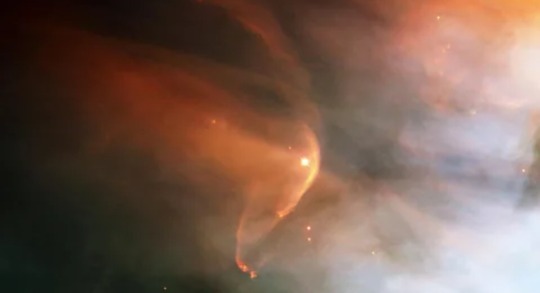
"The sun will send out a pulse … and then we passively wait for a return signal from the outer heliosphere, and we use that time delay to determine where the outer heliosphere must be," Reisenfeld explained.
As the sun circles the outer rim of the Milky Way, the solar wind keeps cosmic radiation at bay, forming a protective bubble. This is good for us, since "that radiation can damage spacecraft and it can be a health hazard for astronauts," Reisenfeld said.
Originally published on www.livescience.com
COMING UP!!
(Saturday, March 16th, 2024)
"WHAT IF WE ARE TRULY ALONE IN THIS UNIVERSE??"
#astronomy#outer space#alternate universe#astrophysics#universe#spacecraft#white universe#space#parallel universe#astrophotography
68 notes
·
View notes
Photo
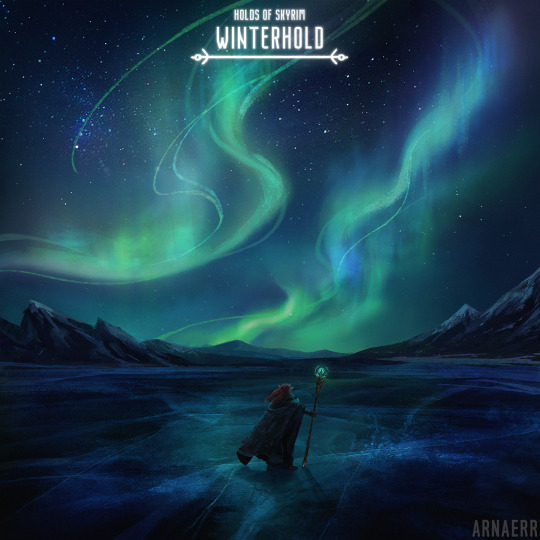
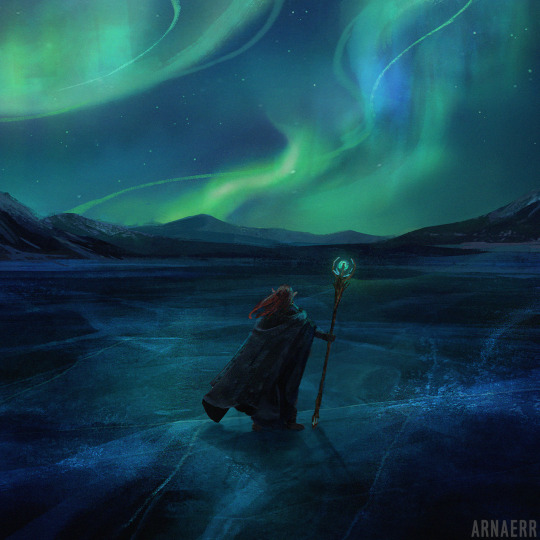
This bleak snow-blown hold in the northeast corner of Skyrim is utterly inhospitable. It is an intensely cold region, and most of the hold is covered in snowy tundra plains and high mountain ranges. Along the coast is a polar environment of glaciers and icebergs.
prints and patreon: x
more from this series
1K notes
·
View notes
Photo
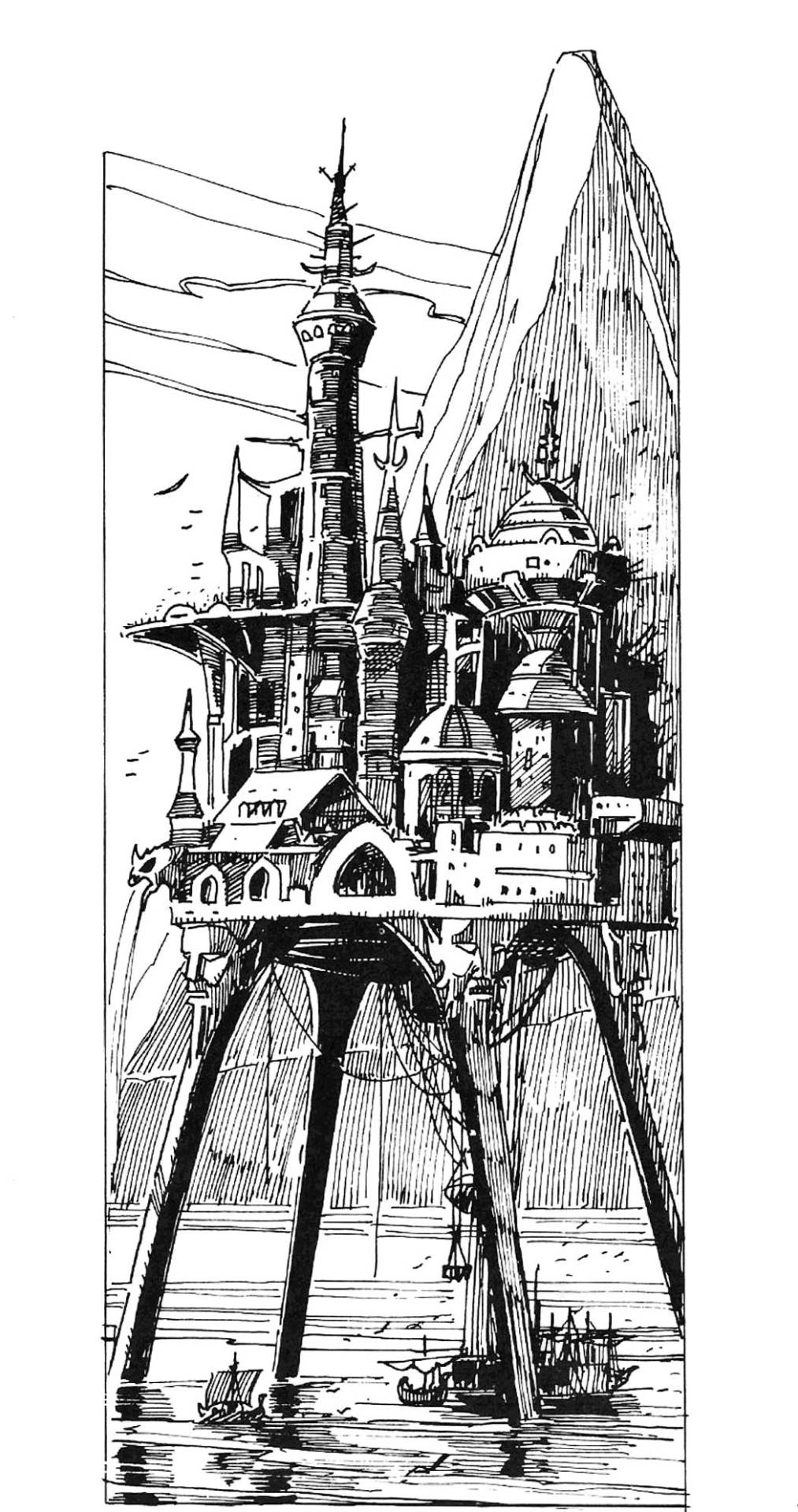
“Sardath is an alarming city, built on stilts over a lake, which is itself squeezed precariously between two sheer mountain peaks. It is inhabited by the rough men and Dwarfs who built the city a few centuries ago to house them while they exploited the many resources of the inhospitable region.” (Titan: The Fighting Fantasy World, by Steve Jackson and Ian Livingstone, Puffin Books, 1986)
#Fighting Fantasy#Titan: The Fighting Fantasy World#fantasy city#Steve Jackson#Ian Livingstone#Steve Jackson UK#Sardath#dwarven architecture#boat#ship#mountains
418 notes
·
View notes
Text
The deportation of hundreds of thousands of people to an arid, allegedly empty region offered an alibi of sorts. If deaths occurred in such inhospitable conditions, how could the Ottoman state be blamed for the violence of the desolate land and its supposedly savage inhabitants?
Butthe environmental dimensions of the genocide reveal the emptiness of such claims. Ecologies became conscripted into human violence in ways that were both unforeseen and intentional. The story of what happened as a result of forced deportations to the arid southern regions of the empire reveal the political choices that have made these ecologies lethal. These are lessons to bear in mind today, as people continue to struggle under the weight of forced migration into difficult terrain, whether the Sahara, the Mediterranean, the Sonoran desert or the Darién Gap.
While many deportees ended up scattered around Aleppo and south all the way to what is today Jordan, Israel and the Palestinian territories, a large number were sent to the sparsely populated region of the Jazira, the borderlands of today’s northeast Syria, southeast Turkey and northwest Iraq.
[...] Part of the reason for the difficulty of expanding cultivation and settlement in the region was the Moroccan locust. As in the United States at roughly the same time — where the Rocky Mountain locust was described as the “greatest obstacle to the settlement” of the Great Plains — so, too, in the Jazira did locusts strike again and again. They most notably wiped out cotton crops during the 1860s when eager planters hoped to capitalize on the worldwide cotton shortage set in motion by the American Civil War. Hungry locusts would eat pastures, too, but nomadic pastoralists of the region could move elsewhere in the event of a locust swarm, whereas tillers of the land could not. For this and many other reasons, the idea of sending Armenians to the desert to live was preposterous.
The year 1915 was known as “The Year of the Locust” in greater Syria, but much less known is how the locust afflicted the Jazira during this same year and decades before. One Ottoman agricultural official compared the locusts in the Jazira and elsewhere in the empire during World War I to “an oil stain,” ever expanding, and posing more of a threat to the Ottoman war effort than the invading Allied armies.
Armenians themselves also experienced the locusts. On the road of deportation, an Armenian from Corum, Vahram Dadrian, wondered, “Weren’t we a lot like those creatures, scattered everywhere, abandoned on every road, while bloody heels crush us without mercy?”
What the environmental dimensions of the Armenian genocide reveal
48 notes
·
View notes
Text
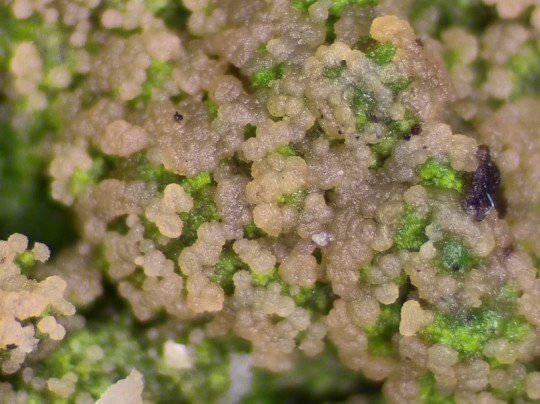
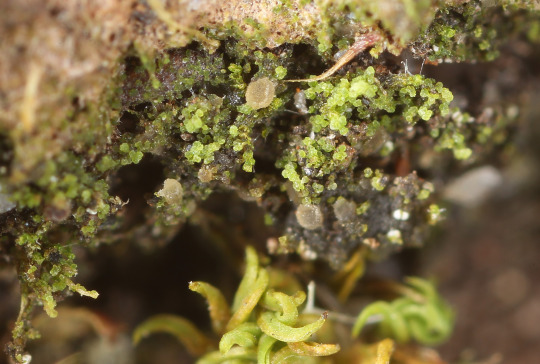

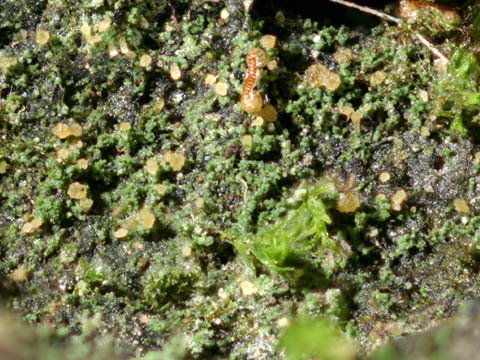
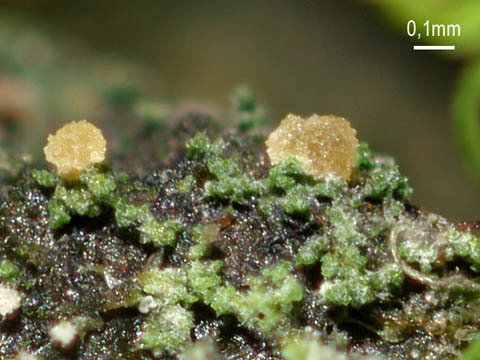
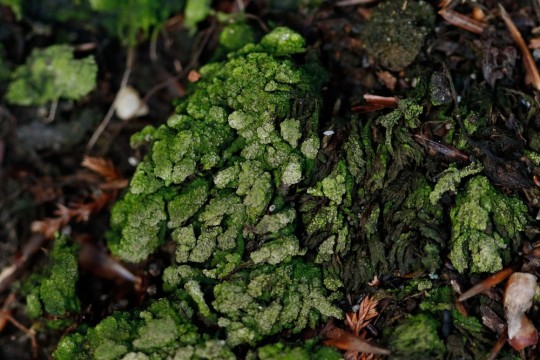




Vezdaea leprosa
Lichens are known as early colonizers--they are able to live and grow on solid rock, with little water/nutrition, when the environment is inhospitable to most plants. And the thought is normally that they are then overtaken by mosses, and these mosses are in turn overtaken by small vascular plants, and then bigger and bigger plants, and so on. We typically think of them as only having the advantage in primary succession since they are slow growing and often sensitive to disturbance and pollution, and mosses and vascular plants have the advantage in secondary succession situations. But some lichens like V. leprosa have adapted to grow not only on disturbed soil and in regions with heavy metal pollution, they also grow ON mosses and plant debris, using the corpses of their opponents as substrate to fuel their growing empire! Too bad they are super tiny so they will never actually take over, but I salute their audacity and nerve. They serve as a reminder that to every rule in biology, they are probably numerous exceptions. They can often be found growing in old quarries, near industrial outbuildings, and in cemeteries, so who knows? Maybe you'll get lucky and V. leprosa will grow on your corpse some day too!
images: source | source
info: source | source | source
#lichen#lichens#lichenology#lichenologist#fungus#fungi#mycology#ecology#biology#botany#bryology#symbiosis#symbiotic organisms#algae#life science#environmental science#natural science#nature#naturalist#beautiful nature#weird nature#trypo#tw: trypophobia#Vezdaea leprosa#Vezdaea#I'm lichen it#lichen a day#daily lichen post#lichen subscribe
113 notes
·
View notes
Photo
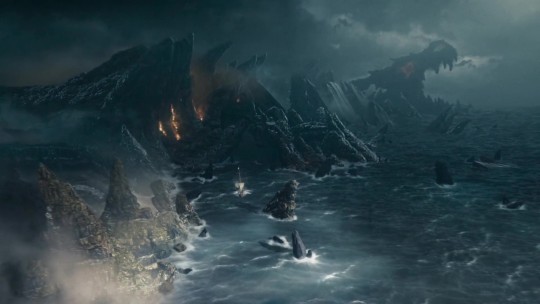

Dungeon: The Fleetbreaker’s Bones
“More than three hundred years dead and rotting and it’s still going to kill us all. That’s dedication right there.”
-Tousu, hapless deckhand moments before a wreck
The remnants of this great kaiju turned fossil-reef has been swallowing up ships for centuries, a habit it’s not managed to break despite a great hero spearing it to a volcanic atoll and founding a prosperous kingdom over the territory it never would have ceded in life. Underwater lava flows create boiling mists and unstable weather patterns making sailing anywhere near the island a gamble. Ships lost in storms throughout the region seem invariably pulled towards the reef, leading many in villages along the coast to speculate that not even death can sate the great beast’s hunger.
In more recent years a ramshackle band of corsairs has decided to make the Reef their home, having suffered a disastrous defeat while raiding the mainland and needing somewhere, no matter how inhospitable, to regroup. The Fleetbreaker ironically provided the perfect safe harbour, close enough to the trading lanes to raid, far enough out of anyone’s way and into unfriendly waters that reprisal was unlikely. They’ve had such success that they’ve been able to cobble together dwellings and fortifications across the reef, as well as a knocked together shipyard in the sheltered caverns that were one the kaiju’s belly.
Adventure Hooks:
The Fleetbreaker Pirates have managed to chart the rhythm of the atoll’s seemingly unpredictable weather, following in the wake of storms like scavengers after a bloodthirsty predator. With the party’s vessel having barely survived the night battling a sulfurous smelling gale, they’ll have to act quickly as first light and the hope that comes with it is dashed by the appearance of enemy vessels on the horizon.
Captured at sea (or perhaps after having one too many rounds of grog while in port) the party find themselves clapped in irons, stripped of their gear, and locked in a series of muggy stone cells. The Fleetbreakers deal in slaves as well as plundered goods, and it’s only a matter of weeks or maybe even days before their buyer shows up to trade in flesh. They have to escape, but how? Sneak out just their friends and disguise themselves on an enemy ship? Break out the other innocents and risk detection?
There are many sections of the great fossil reef where the pirates do not go, tidal warrens inhabited by skittering things made monstrous by generations of feeding off kaiju flesh, boiling caverns where lava vents glow just beneith the surface of the water and odd shapes move in the mineral vapour, lofty and winding passages leading to the lonlely spinal cliffs where the sound of strange birds causes hallucinations. Somewhere among all of this is the hero’s spear, a divinely invested artifact that has the power to found, and perhaps destroy kingdoms. The party may unwittingly stumble across this artifact while escaping captivity, or find it in a dramatic moment as they pursue the last of the pirate captains into the caverns in their final push to oust the corsairs once and for all. What they do with it after that is all up to them.
#seaside#pirates#mid level#low level#sailing#dungeon#Dungeons and Dragons#d&d#jailbreak#high level#Dungeon Crawl#treasure hunt#kaiju#ocean
189 notes
·
View notes
Photo

Legends and myths about trees
Forest spirits and natives (1)
Maero – The Fierce Bigfoot in New Zealand folklore
Maero are creatures that appear only in Maori mythology. This mythical creature is sometimes described as a type of wild man, such as the Yeti of the Himalayas or the Sasquatch of Native American lore.
In Māori tradition, the Maero are an iwi-atua or supernatural people from New Zealand. They are sometimes described as giants or wild men of the woods, and inhabit mountains and forest, particularly in the South Island and Tararua Range. Maero are characterised as wild, malevolent and often violent, carrying stone clubs as weapons. They are covered in dark body hair and have long, bony fingers with sharp fingernails. They kill and eat humans and other animals.
The Maero are said to harbour anger towards the Māori, who arrived from Hawaiki, and are thought to have displaced them and ruined the tapu (sacredness) of their homes, forcing them to dwell in inhospitable alpine regions.
There are several Māori tales that tell of encounters between the Maero and the Māori. Still, the most bizarre tale regarding the Maero is that of Tukoio who succeeds in killing one of these creatures.
Tukoio cut of the Maero’s arms, legs and head. He took the head home, perhaps as a trophy. The head was still alive, however, and was calling for help. Tukoio, who did not wish to fight a whole group of Maero on his own, dropped the head, and went to get reinforcements. When he came back, the head was gone, and it is said that the Maero reassembled itself, and returned to the forest. In most stories, the Maero are not known to possess supernatural powers such as this.
Unlike the Yeti and the Sasquatch, however, there are no alleged sightings of this creature, the folklore of the severed head staying alive rings a bell. There was a tale of Bran the Blessed, a giant and king of Britain in Welsh mythology who ordered his fellows to cut off his head and bring it back to London. As I recall, the head survived for nearly 80 years.
If you follow myths and legends from around the world, both East and West, you will find many similar legends. Moreover, many have been rewritten by religion and power struggles. Above all, there is not a single person in the world who actually knows the past.
In fact, thousands or hundreds of millions of years ago on Earth (the Universe), there must have been unimaginable creatures and various phenomena taking place. George Lucas and Philip K. Dick may have communicated with beings from the past in their dreams.
Who knows?

木にまつわる伝説・神話
森の精霊たちと原住民 (1)
マエロ 〜ニュージーランドの伝説、怖いビッグフット
マエロはマオリ族の神話にのみ登場する生き物である。この神話上の生き物は、ヒマラヤのイエティやネイティブ・アメリカンの伝承であるサスカッチのような野生の人間の一種と表現されることがある。
マオリ族の伝統では、マエロはニュージーランドのイウィ・アトゥア (超自然的な人々) である。マエロは野性的で悪意があり、しばしば凶暴で、武器として石の棍棒を持っているとされる。彼らは黒い体毛に覆われ、骨ばった長い指と鋭い爪を持っている。人間や他の動物を殺し、食べる。
マエロは、ハワイキからやってきたマオリ族に怒りを抱いていると言われ、マオリ族を追い出し、彼らの家のタプ(神聖さ) を台無しにして、人を寄せ付けない高山地帯に住むことを強いたと考えられている。
マオリの伝説には、マエロとマオリの出会いを描いた物語がいくつかあるが、マエロにまつわる最も奇妙な物語は、一匹を殺すことに成功するトゥコイオの物語である。��ゥコイオはマエロの腕、足、頭を切り落とした。そして、トロフィーとしてか、その首を持ち帰った。しかし、頭部はまだ生きていて、助けを求めていた。一人でマエロの集団と戦うのを避けるため、トゥコイオは首をその場に置き、援軍を呼びに行った。戻ってきたときには首はなくなっており、マエロが自分で再び組み立て、森に帰っていったと言われている。多くの物語では、マエロがこのような超能力を持っていることは知られていない。
イエティやサスカッチとは異なり、この生物の目撃例はないが、切り落とした首が生き続ける伝承には、どこかで聞き覚えがある。
ウェールズ神話に登場するブリテンの王で巨人のブランが、仲間に命じて自分の首を切り落とし、ロンドンに持ち帰ったという話があった。確か、その首は80年近くも生きながらえた。
東西を問わず、世界中の神話や伝説を追っていくと、似たような言い伝えが多々ある。しかも、多くは宗教や勢力争いによって書き換えられている。何より、過去を実際に知っている人はこの世に一人も存在しない。
実は、数千、数億年前の地球 (宇宙) では、わたしたちの想像を絶する生き物が存在し、色々な現象が起こっていたに違いない。ジョージ・ルーカスやフィリップ・K・ディックは、夢の中で過去の存在と交信していたのかも…。
本当のことは誰にも分からない。
#trees#tree myth#tree legend#mythology#legend#folklore#bigfoot#maero#maori mythology#new zealand#nature#art
105 notes
·
View notes
Text
Solarpunk in the Desert
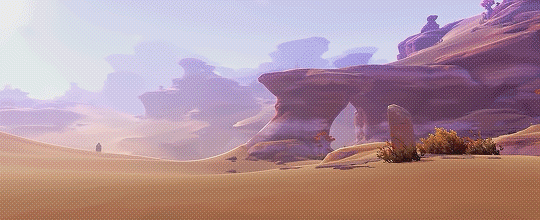
Let me talk a bit more about Solarpunk this week. Especially about Solarpunk in different climates and areas. Because, let's face it: Most of Solarpunk art does depict either (sub)tropical foresty areas or at least temperate regions. It does not show any other climate extremes, which is kinda sad, because the world does not only exist in those lush green areas.
Of course, one of the big reasons is, that it kinda depicts the places it is from. For once South America had a big influence on Solarpunk, which is most oftenly associated with the lush rain forest of the amazonas. But also... White people kinda feel most at home in temperate regions.
But if either we woud establish a Solarpunk world - or you just wanted to write a Solarpunk stories... There would still be deserts.
And sure, we could talk about stopping desertification and such things. Something that is definitely important. But some desert should remain, because they are still a unique habitat. So, what does Solarpunk do with that - and how could people live in those areas?
Now, I have to underline again: Deserts are habitats for all sorts of flora and fauna. Animals live their, no matter how inhospitable to life they seem to be. Because of that they should be protected to some degree. Again: We should stop the spread of deserts into other habitats, but the desert in of itself is home to a lot of life, even if it might not seem that way.
As such it has also been a habitat to humans for a long while. No wonder. While humans did not originate in the deserts of Africa, those were darn close and of course some of the first humans went there and some managed to survive there. As such our species has actually a lot of experience when it comes to surviving in the desert.
Humans for the most part will not live in the middle of the desert, of course, but rather at the outskirts or maybe at an oasis of some sort. But of course even there people might need to deal with the elements. Like the heat, the sun, the cold nights (never forget: deserts are very cold at night), the generally dry climate.
Of course we could deal with the heat with ACs, but... ACs are not very good for the environment of course. But also: For most of human history, humans did not have ACs and humans have actually found a lot of ways to keep houses relatively cool through passive cooling system and by using building materials, that cool the insides and help the place well tempered.
But of course in modern times, we also could use heat pumps to move the temperate air around and keep the houses cool during the day and warm at night.
One big issue is the water. Of course, humans tend to go to places where there is water. Like an oasis or close to a lake or other body of water. But of course we do have an issue with the ground water declining for several reasons. So, what can we do?
Well, actually we have found intesting ways with harvesting the water from the air through all sorts of methods. For example by spanning wires, where the daw can collected during thr night. While it is not plentiful, it does work quite well.
But, of course, I cannot talk about solarpunk deserts without talking about photo voltaic and also wind energy.
There are those folks, who will propagade that it would be super practical to build like this giant, giant photo voltaic farm in the middle of the Sahara and then get all the energy from it. Which, technically... I mean, a lot would have to change, but yeah, there is a lot of energy there.
Even though... I am not a big fan of this idea. Because, again: Habitat. And animals cannot all live in those areas, where there is big, big photovoltaic. Still, some areas of the desert could be used as such to add to the general energy grids.
And, yes. There is also wind energy. Something a lot of people do not consider. But a lot of deserts have very windy areas, which could easily be used to generate energy. So... Yeah, that would be nice, wouldn't it?

#solarpunk#solarpunk fiction#solarpunk worldbuilding#desert#landscape#worldbuilding#renewable energy#photovoltaic#wind energy
88 notes
·
View notes
Text
Mor'iargalthil: Some Garb & Lore
Mor'iargalthil is an imagined place in the northwest Grahtwood region during the Third Era, based off of ESO's established lore (which I have not played because I'm not super interested in playing a TES MMO, no shade tho).
The "av Mor'iargalthil" of Zath's name means "of/from an inhospitable grove" in Bosmeris (non-canon extension of canon language). Here he is in traditional Galthili garb, though he would have been much younger the last time he was there. He doesn't have antlers of his own like some Bosmer do btw, those are just sewn into his hood.

To make a long story shorter, Mor'iargalthil is a small clan of descendants from Gil-Var-Dell survivors who retreated to more isolated places. They're generally a dour and wary group. Galthili Bosmer observe the Green Pact, but are more entwined with neighboring Wood Orcs than other Valenwood Bosmer. This cultural exchange unexpectedly resulted in Galthili Bosmer incorporating Mauloch/Malacath into their pantheon alongside Y'ffre. Their traumatic history with Daedric Princes instilled a complicated mix of reverence and hatred, but Mauloch resides in a grey area and is an exception. His fables speak to them as people who feel they too were "consumed and twisted" by another force.
Here's some extra doodles and more clothing details under the cut.
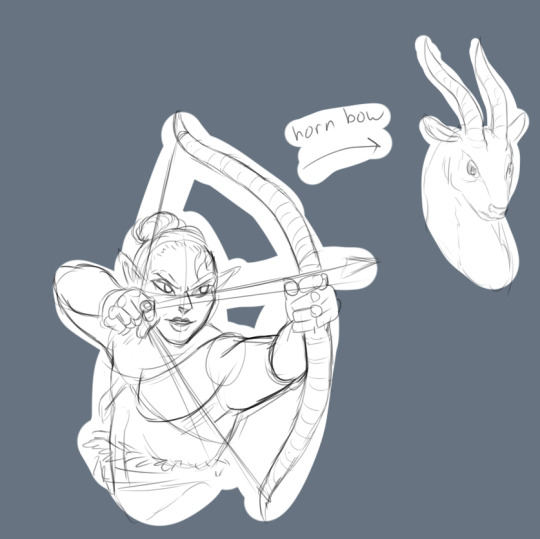
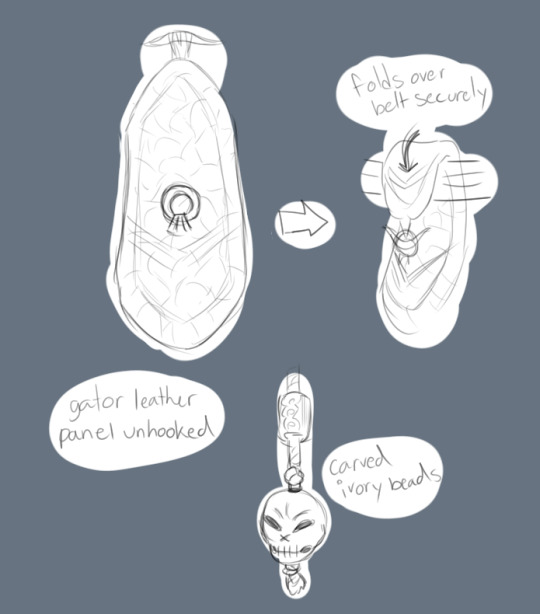
Those aren't permanent tattoos, they're more akin to henna. Zath was born under the Serpent and it affects many aspects of his life, so he often adorns himself with the inauspicious sign.
Zath's hood is separate from the rest of the bow sleeve and can be attached to the beaded leather mantle instead.
Speaking of the hood, it has openings for the ears to keep that super cool merrish hearing unobstructed.
His thumb guard is made of mammal leather - I imagine most Bosmer use thumb-draw instead of finger-draw so that they can move around while keeping an arrow nocked.
These Bosmer use a lot of reptile parts for their leather and shells. Gators, turtles, etc., perhaps even the occasional Daedroth since regions of Tarlain Heights likely still have remnants of that influence.
The front half of the foot is exposed for tree-climbing, but the heel remains cushioned in soft leather. Bosmer unfortunately refuse to put those dogs away cause they gotta grip that tree bark.
As for the horn bow, I'm pretending Bosmer do some Special Stuff to make the horn more flexible, or it's just Magical Creature Materials(tm).
#my art#tesblr#tes oc#the elder scrolls#tes fanart#bosmer#valenwood#mor'iargalthil#zathiril#dear brother#bosmer lore#btw if people want to play in my fake made up place feel free#just tag me or somethin#i do this with all my lore nonsense youre allowed to use it as long as you dont have ill intentions in doing so#fuck it edgy bosmer OCs are cool
25 notes
·
View notes